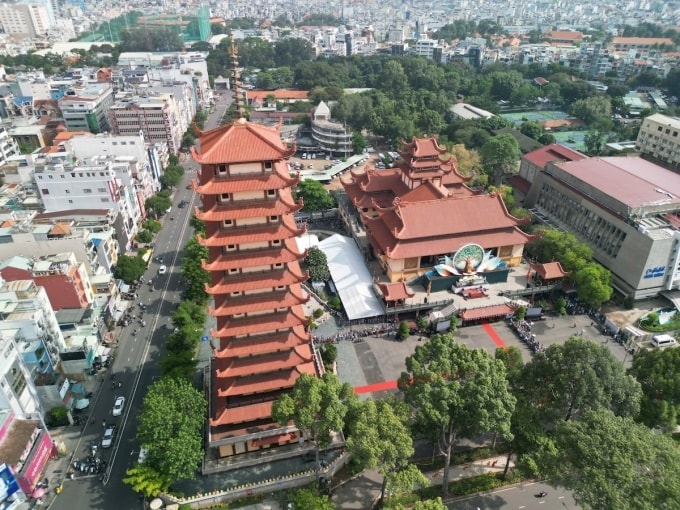
Located at the intersection of Le Hong Phong and Ba Thang Hai streets, the 63-meter-high Da Bao tower commemorates the Buddhist non-violent struggle for religious equality in 1963. The structure has 13 floors symbolizing 13 organizations in Buddhism, each floor has an orange tiled roof, the eaves protruding on four square sides. The first floor of the tower has the largest area, from the first floor to the 12th floor are equally wide.
On the roof of the tower is a 12-meter-high, 6-ton bronze peak. The base of the peak has a shape of fire radiating in four directions, the body has 9 circles symbolizing Buddha turning the Dharma wheel in 9 heavens. At the top of the bronze peak are motifs and two spherical blocks resembling the staff of the founder. Inside each floor is a worship space, displaying Buddhist-related sacred staffs. The entrance of the stupa is located towards the main gate of Vietnam National Temple on Ba Thang Hai Street.
The tower is located in the area of over 3,700 m2 of Vietnam Quoc Tu, which is also the historical land of Southern Buddhism. One year after the Buddhist incident in 1963, the government of the Republic of Vietnam leased the church a 40,000 m2 land area to build the pagoda at the symbolic price of one silver coin. The pagoda built a 7-storey main hall tower and a row of monks' dormitories.
After 1975, the pagoda's area was reduced, and the grounds were abandoned before the government temporarily requisitioned them to build an entertainment center and the Hoa Binh Theater. In 1993, Viet Nam Quoc Tu renovated and embellished many items and completed them in 2003. The Da Bao Tower was not built until 2015.
Since May 11, the heart relic of Bodhisattva Thich Quang Duc has been placed in Da Bao tower for permanent enshrinement after 34 years of preservation at the State Bank of Vietnam in Ho Chi Minh City.
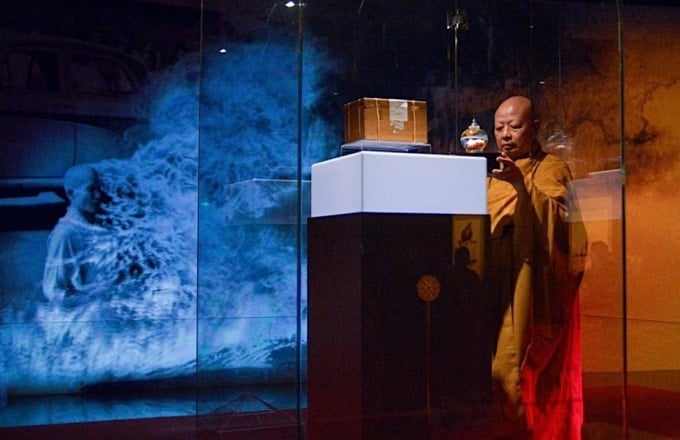
62 years ago, monk Thich Quang Duc doused himself in gasoline and set himself on fire at the intersection of Le Van Duyet - Phan Dinh Phung (now Cach Mang Thang Tam - Nguyen Dinh Chieu, District 3) to protest the suppression of Buddhism by the Republic of Vietnam government. The monk's body was cremated again, but his heart was not much damaged, and was later placed on a glass cup at Xa Loi Pagoda on Ba Huyen Thanh Quan Street, District 3.
The relics were then transferred to the Vietnam National Pagoda and then to the Vietnam Commercial Bank's storage facility. In 1991, the heart relics of Bodhisattva Thich Quang Duc were brought to the State Bank of Vietnam in Ho Chi Minh City.
A representative of the State Bank of Vietnam said that upon receipt, the relics were placed in a brass tower in a sealed glass box at the Central Treasury 2 with the highest security level. During the time it was kept here, the box's seal had never been opened.
On May 5, a delegation of the Vietnam Buddhist Sangha visited the State Bank of Vietnam to request the treasure to be placed at the Vietnam National Pagoda for people to worship on the occasion of the United Nations Day of Vesak 2025 held in Ho Chi Minh City. Currently, the heart relic of Bodhisattva Thich Quang Duc is placed in a spherical glass box with a pointed tip. In addition to the heart relic, since 2019, the Da Bao tower has worshiped the bone relic of Bodhisattva Thich Quang Duc and the Lotus Sutra that he often practiced during his lifetime.
TH (according to VnExpress)Source: https://baohaiduong.vn/thap-da-bao-noi-luu-giu-vinh-vien-xa-loi-bo-tat-thich-quang-duc-411348.html


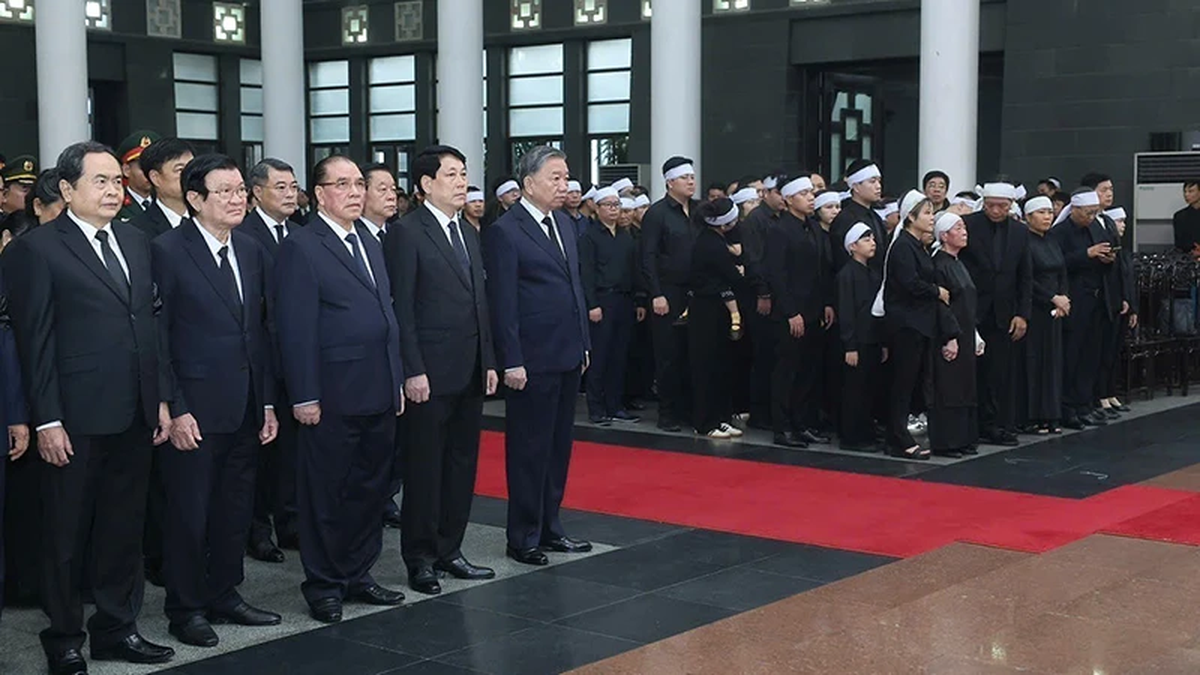
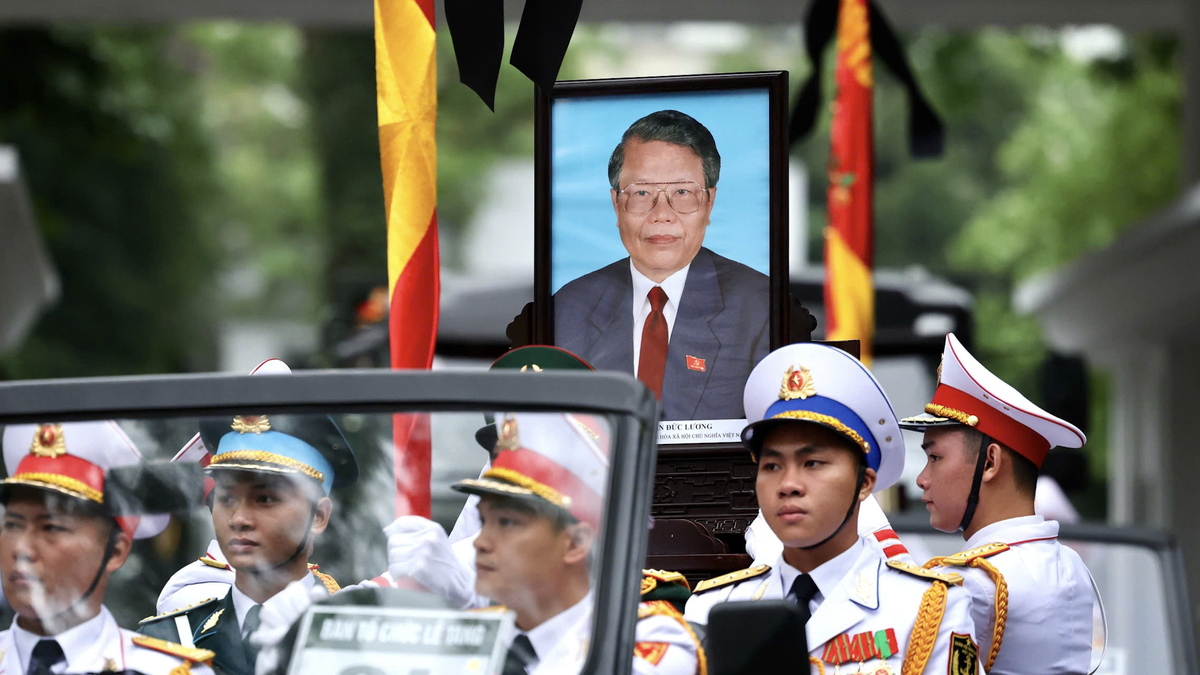
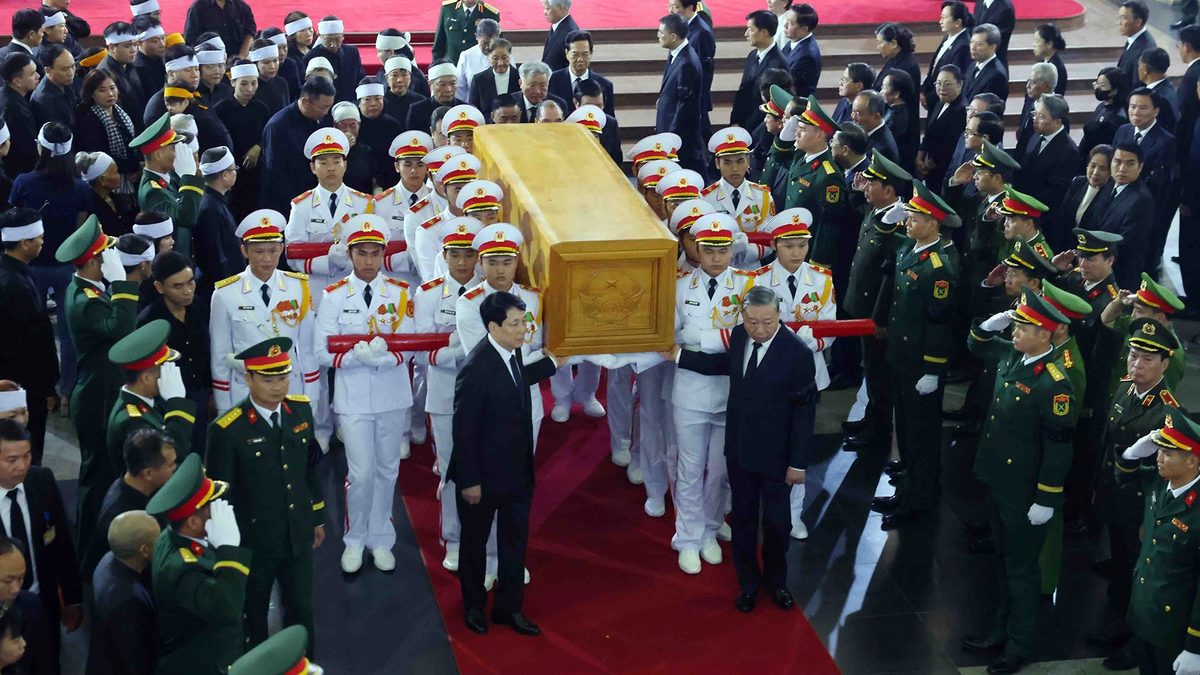
![[Photo] The Government Standing Committee works with ministries and branches on the real estate market situation.](https://vphoto.vietnam.vn/thumb/1200x675/vietnam/resource/IMAGE/2025/5/24/e9b5bc2313d14c9499b8c9b83226adba)
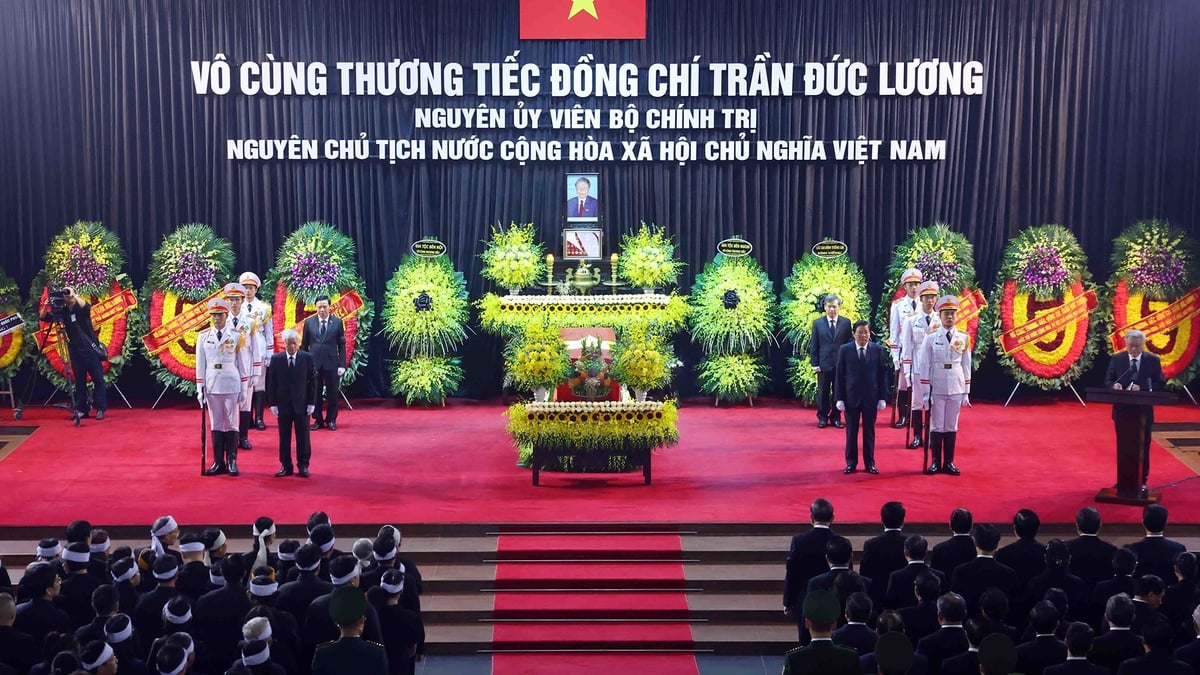
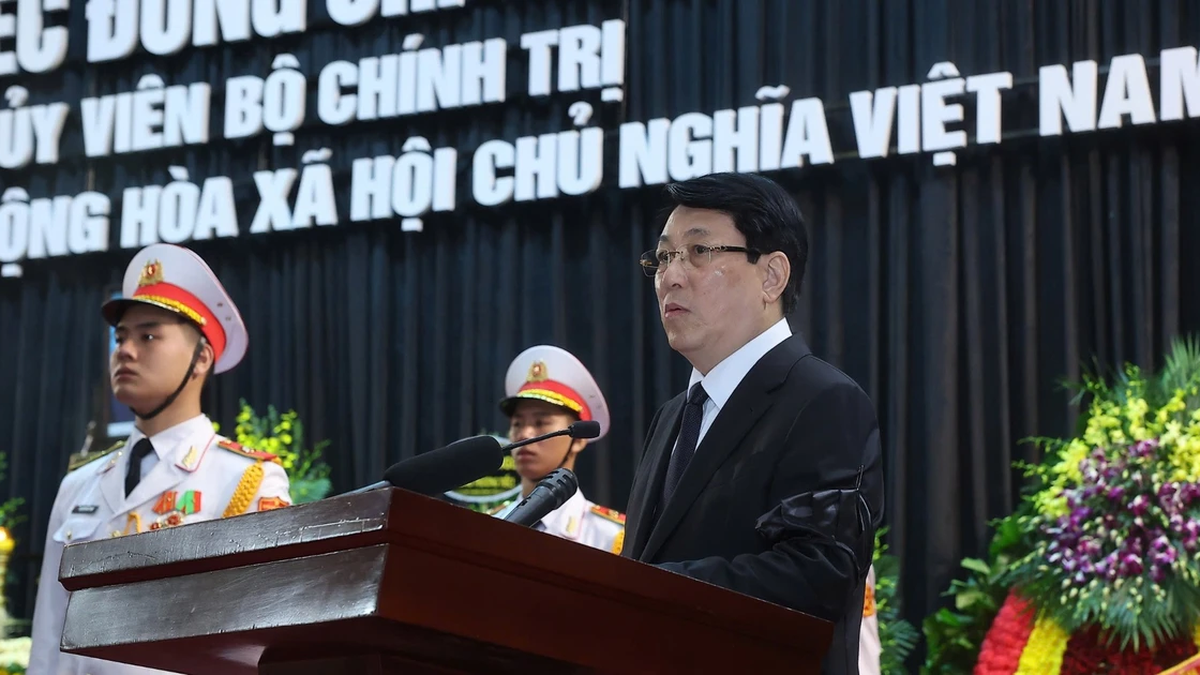


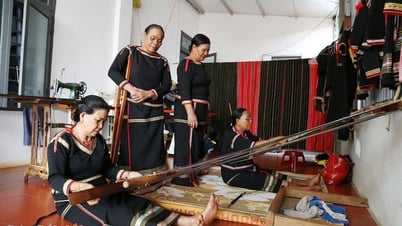

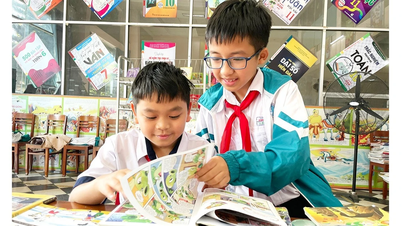

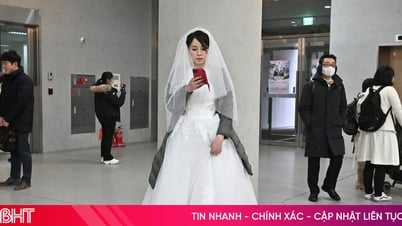

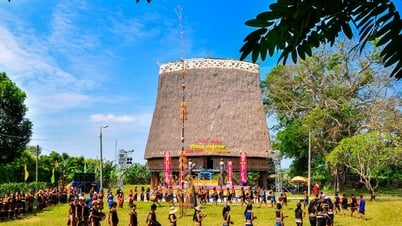
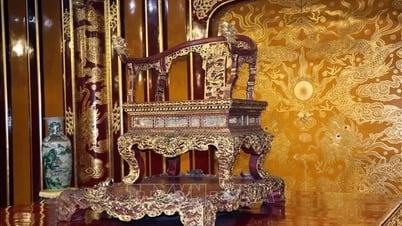




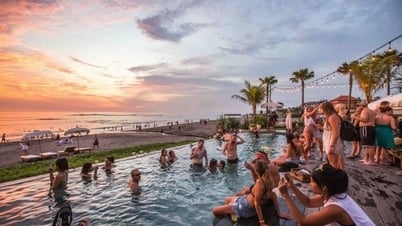
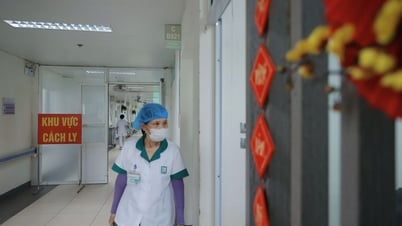
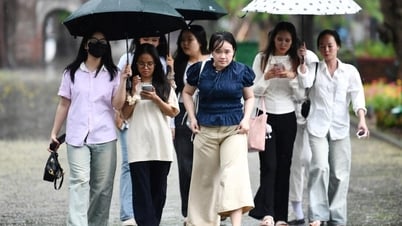
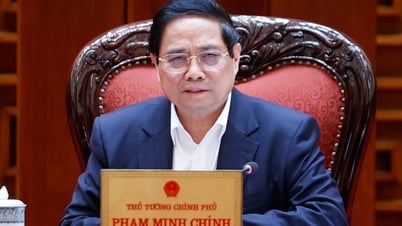
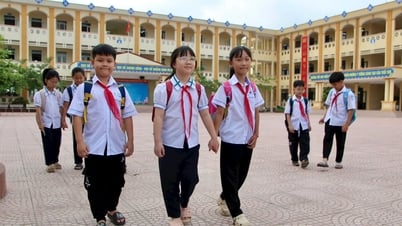
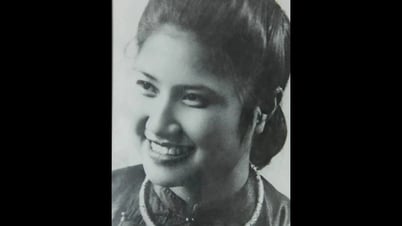
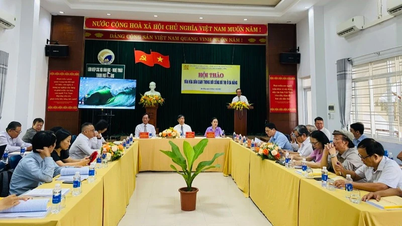













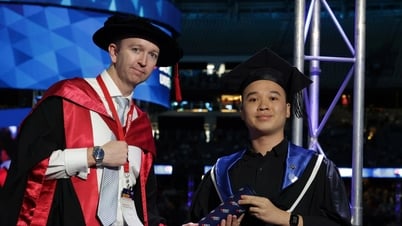


















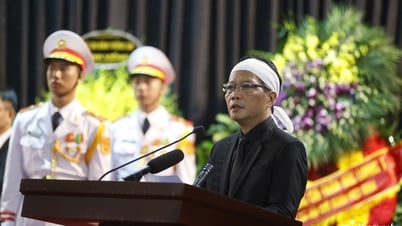

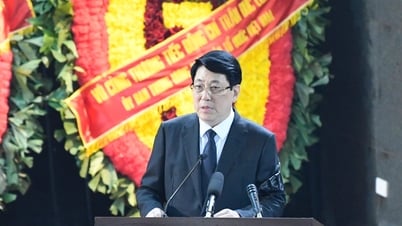
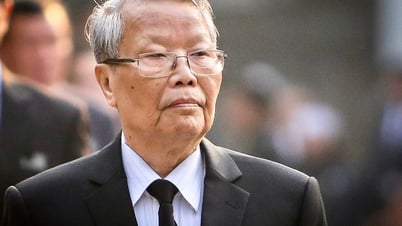
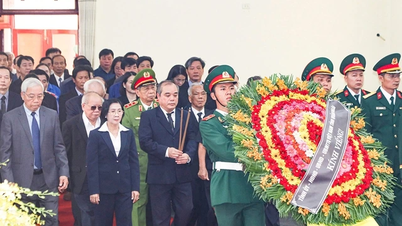







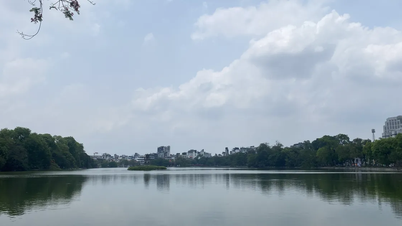

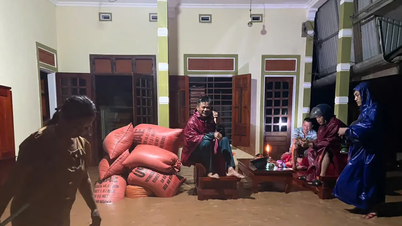
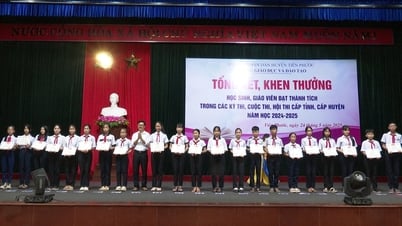
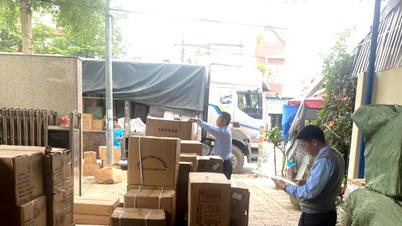


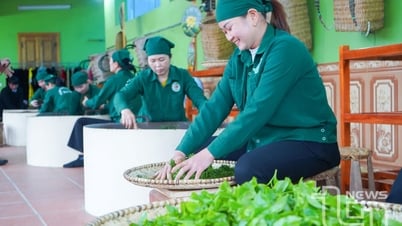

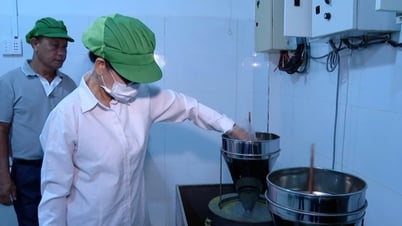





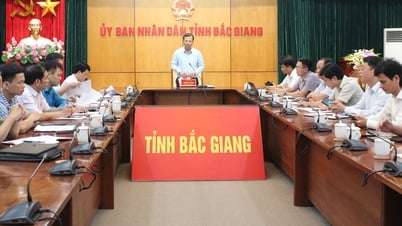





Comment (0)